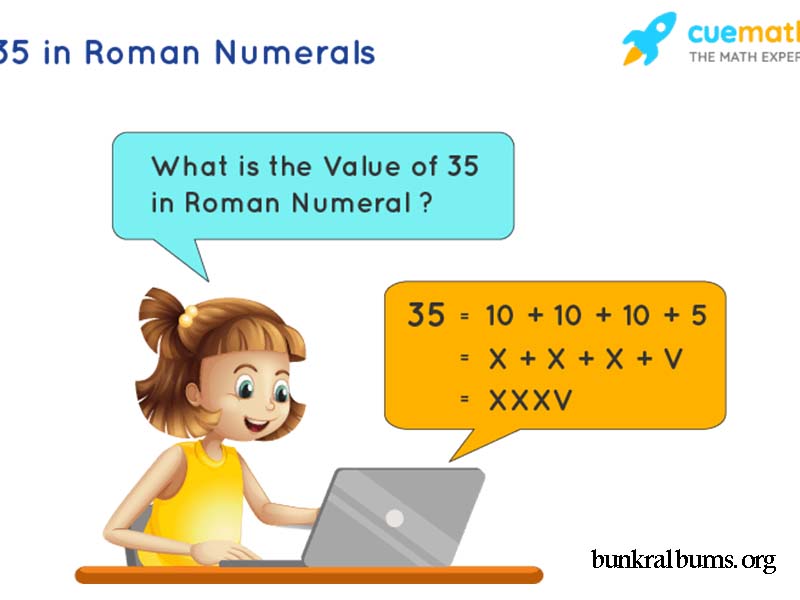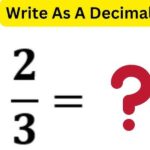Roman numerals, an ancient numerical system originating in Rome, continue to fascinate people today due to their historical significance and unique representation of numbers. For anyone interested in exploring how this system interacts with multiplication, a key question might arise: “What are the Roman numerals that multiply to 35?” This intriguing mathematical exploration not only uncovers the importance of Roman numerals but also shows how multiplication can be applied within this system. In this article, we’ll break down how Roman numerals are used in mathematics and explain how two Roman numerals multiply to the number 35.
What Are Roman Numerals?
Before diving into the concept of multiplication, it’s crucial to understand Roman numerals themselves. The Roman numeral system is based on combinations of letters from the Latin alphabet, specifically the letters I, V, X, L, C, D, and M. Each letter represents a specific value:
- I = 1
- V = 5
- X = 10
- L = 50
- C = 100
- D = 500
- M = 1000
These letters are combined to form various numbers, and the arrangement of the letters affects the number’s value. For example, the Roman numeral XXXV represents the number 35, which is the focus of this article. Multiplying Roman numerals is a bit more complicated than simple arithmetic, but it is possible to break down the values and explore the multiplication of Roman numerals that result in 35.
Breaking Down the Number 35 in Roman Numerals
In Roman numerals, 35 is written as XXXV:
- X (10) + X (10) + X (10) + V (5) = 35.
This simple combination of Roman numerals makes it clear how 35 is represented, but the challenge lies in identifying the Roman numerals that, when multiplied together, result in the number 35.
Roman Numerals That Multiply to 35
When considering multiplication, we know that 35 is a product of the factors 5 and 7. However, Roman numerals do not have a direct representation for the number 7. Therefore, we need to take an alternative approach by breaking the multiplication into simpler terms.
- Multiplying Roman Numerals Representing 5:
- V is the Roman numeral for 5.
- 5 × 7 = 35.
Here, the number 7 can be broken down into Roman numerals as VII, which consists of V (5) and II (2).
- Breaking Down the Factors:
- V (5) × VII (7) = XXXV (35).
- In Roman numerals, this is represented by combining the values of V and VII.
Therefore, V (5) and VII (7) are the Roman numerals that multiply to give the result of 35. This product in Roman numerals would be written as XXXV.
Exploring Multiplication in Roman Numerals
Multiplying in the Roman numeral system can seem complex because it was not originally designed for operations like multiplication. Unlike modern numerals, which use a base-10 system, Roman numerals are additive (and sometimes subtractive). This means we rely on breaking down numbers into their respective parts rather than performing direct multiplication as we do today.
To understand multiplication in Roman numerals, let’s consider a few other examples:
- Multiplying 2 and 15: II (2) × XV (15) = XXX (30).
- Multiplying 4 and 8: IV (4) × VIII (8) = XXXII (32).
These examples highlight the process of using Roman numerals for multiplication, even though it requires careful attention to the values and letters involved.
The Importance of Roman Numerals in Mathematics
Roman numerals are not only a relic of the past but also a crucial part of understanding the evolution of mathematics. Although we now use the Arabic numeral system for calculations due to its simplicity and efficiency, Roman numerals still have their place in certain applications. For instance, they are used on clocks, in movie titles, for outlining chapters in books, and on important historical documents.
The multiplication of Roman numerals, while not commonly practiced, offers insight into the flexibility of this ancient system. It forces us to break down numbers into factors and look at them from a different perspective, providing a unique challenge for students of both mathematics and history.
Common Uses of Roman Numerals Today
In modern times, Roman numerals are often associated with special events and milestones. Some of the most common uses include:
- Super Bowl Games: Roman numerals are used to denote the yearly Super Bowl event, such as Super Bowl L (50) and Super Bowl LV (55).
- Watches and Clocks: Roman numerals are still widely used on clock faces, adding an elegant and classical touch to timepieces.
- Monuments and Buildings: Many historical monuments feature Roman numerals to indicate the year they were built or dedicated. For example, a cornerstone might read “MDCCLXXVI,” which stands for 1776.
- Legal Documents: Roman numerals are often used in legal and formal documents, especially to number sections and subsections.
While Roman numerals may not be the most efficient system for day-to-day calculations, their use in specific contexts preserves their historical and cultural significance.
Conclusion
In summary, Roman numerals offer a fascinating glimpse into the history of mathematics. Understanding how Roman numerals work, especially when multiplying to a specific number like 35, can broaden our perspective on ancient numerical systems. The Roman numerals that multiply to 35 are V (5) and VII (7), which together give us XXXV. While multiplication with Roman numerals requires more effort than modern methods, it remains a unique way to engage with numbers.
For anyone interested in the history of mathematics or simply curious about the intricacies of Roman numerals, exploring how numbers like 35 can be formed through multiplication offers a rewarding challenge. This ancient system continues to hold value in today’s world, reminding us of its long-standing impact on culture, history, and numeracy.
By using keywords such as “roman numerals that multiply to 35″ and others throughout this article, we’ve aimed to provide both informative and SEO-friendly content. Whether you’re learning Roman numerals for fun or studying their role in history, the interplay between these symbols and multiplication brings a new level of appreciation to this ancient numerical system.







